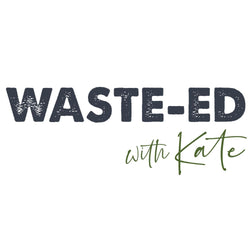
Recycling Standardisation
In the past, New Zealand's approach to recycling has traditionally varied across regions, resulting in inconsistencies in what can be recycled and how it is processed. This has posed challenges for both consumers and recycling facilities, leading to confusion and inefficiencies in the recycling chain.
On the 1st of February, our kerbside recycling became standardised! Regardless of whether you have a recycling bin or crate, or take yours to the recycling centre, it doesn't matter where you live the rules are the same nationwide.
Why?
There are many great reasons as to why recycling was standardised, simply it aims to establish clear guidelines and consistency in the recycling processes nationwide. Here are some other key aspects of this shift:
Uniform Recycling Guidelines
Clear labelling and educational campaigns play a crucial role in informing the public about these guidelines and encouraging correct recycling practices. Having uniform guidelines leads to less confusion.
Consistent Collection Systems
Implementing consistent collection systems simplifies the process for both households and recycling facilities. This includes standardised bins, collection schedules, and methods for handling different types of recyclables. Not to mention, this improves efficiency of recycling operations!
Environmental Conservation
By increasing recycling rates and reducing contamination, standardisation contributes to conserving natural resources and minimising landfill waste.
What can go in your recycling bin or crate:
GLASS BOTTLES AND JARS (NO LIDS)
Only glass beer/wine bottles or glass jars from the kitchen. No broken mirrors or mugs, in fact, if its broken materials, these should all be wrapped in paper and sent to landfill. Its a huge health and safety issue to put broken glass into the kerbside glass bin and typically these types of glass/materials (mirrors and mugs) are a different type of product, not recyclable glass!
Glass is infinitely recyclable, but clear glass has a higher value because clear glass can always be turned back into clear glass, whereas coloured glass can only be the colour it already is or black!
TIN CANS & ALUMINIUM CANS
Your recycling bin is not a scrap metal bin, so no car parts, materials from around the house, number 8 wire, that all can go to scrap metal recycling (they will even give you some cash back)!
PAPER & CARDBOARD
Paper & cardboard seems easy (and it is), but here are two easy rules to follow in terms of paper and cardboard:
- Clean paper and cardboard (make sure your pizza boxes don't have any leftover crusts in them!).
- "if it rips and there is no plastic film on it, then it can be recycled".
Notably, paper towels tend to 'rip', but should NOT be put in your kerbside recycling bin/crate because they are not recyclable. The fibres in paper towels are too short to be recycled/used again. However, paper towels can go into your home compost!
PLASTIC BOTTLES, TRAYS AND CONTAINERS 1, 2, & 5'S ONLY (NO LIDS)
Plastic bottles, trays and containers is often where a lot of the confusion comes in for recycling. But its pretty straight forward now, if the item is,
- Plastic 1, 2 or 5
- single-use but rigid (not able to be scrunched into a ball)
- from your bathroom, kitchen, or laundry and is
- smaller than 4 litres
Then it can be put in your kerbside bin or crate!
The 'No Lids' rule has been surprisingly one of the most controversial topics from the introduction of recycling standardisation. Yes, lids have a plastic identification number on them (usually a 1,2, or 5), but NO, they can not be recycled via the kerbside collections. Heres some reasons why lids can't go through your kerbside:
- They are too small or flat and contaminate other recycling.
- They jam the recycling plant machines.
- They shoot off bottles like bullets! During the recycling process of plastics, they are bailed up under pressure which causes caps to 'pop out' of the bail.
After reading this blog, we at Waste-Ed hope you now understand why recycling standardisation happened and found some insights as to why the rules are what they are!
Check out Episode 2 of our Wasted New Zealand Series to learn even more about recycling in NZ!
For even more detail about standardisation check out the Ministry for the Environments website, its all accessible from there!
Ministry for the Environment: https://environment.govt.nz/what-you-can-do/campaigns/recycle/



Leave a comment